| Holophrya teres; focus plane on the contractile vacuole (KV), macronucleus (Ma) with nucleolus (N) and the oral basket (MS). (1) Holophrya teres is a predator of multicellular organisms like rotifers. |
| |
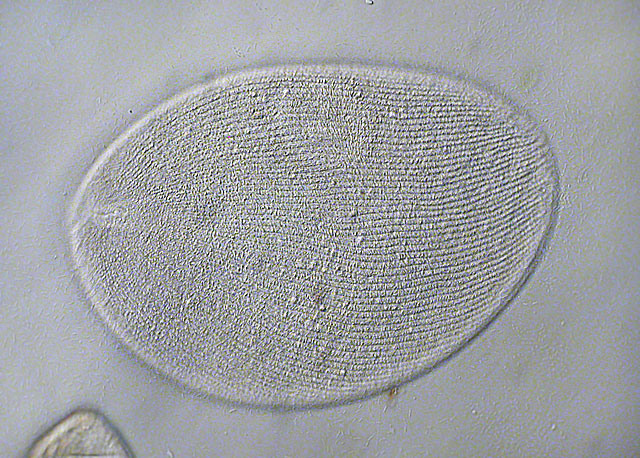 |
| Holophrya teres; another specimen; focus plane on the striations of the cortex. (2) The number of ciliary rows is between 80-110, which is in contrast to Holophrya discolor (number of ciliary rows: 35-64) |
| |
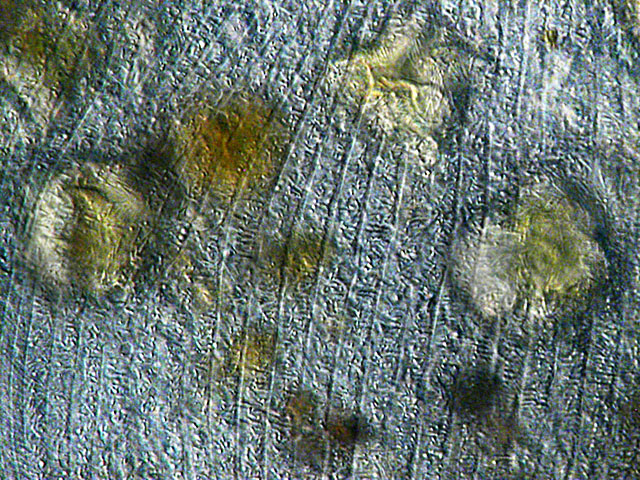 |
| Holophrya teres; another specimen; striations of the cortex; detail. (6) |
| |
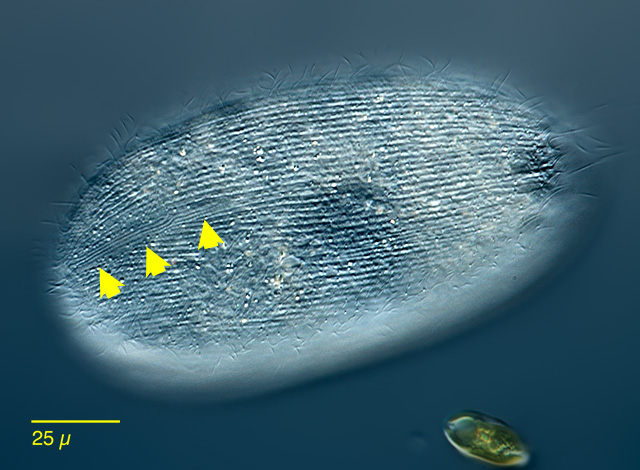 |
| Holophrya teres; focus plane on the adoral zone of membranelles (AZM). (1) |
| |
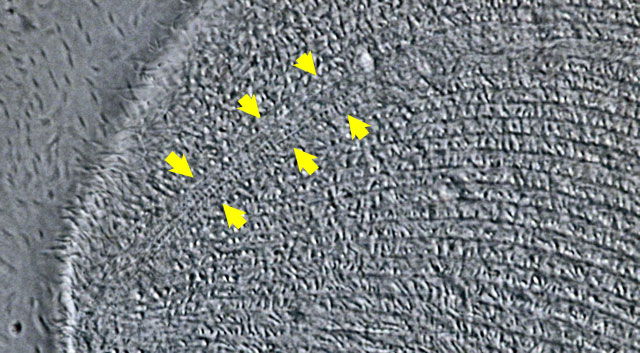 |
| Holophrya teres; same specimen; focus plane on the cilia (7) |
| |
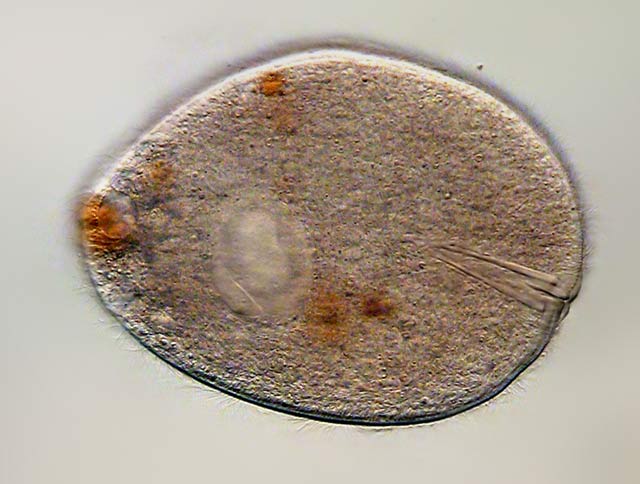 |
| Holophrya teres; another specimen of (5) |
| |
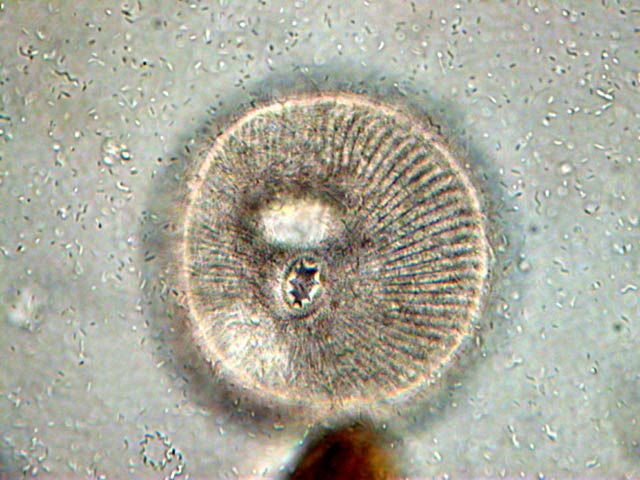 |
| Holophrya teres; apical view of the oral basket. (4) |
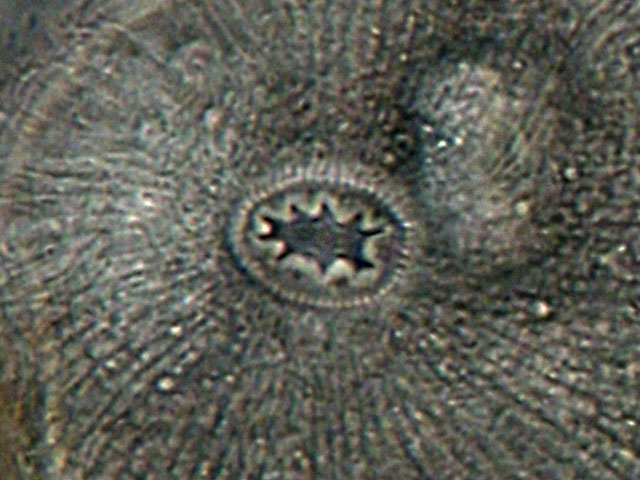 |
| Holophrya teres; apical view of the oral basket, detail. (4) |
| |
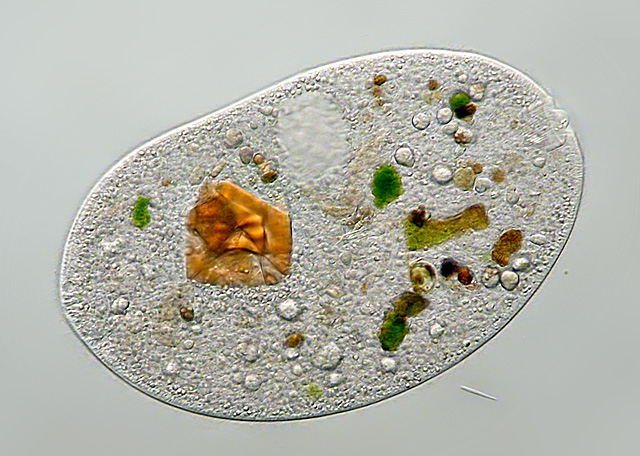 |
| Holophrya teres; another specimen; the prey may consist of algae, starch grains or fibres of paper. (3) |
| |
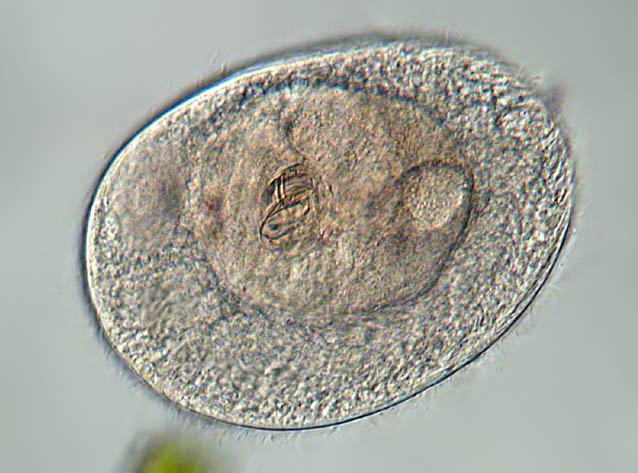 |
| Holophrya teres; with an engulfed rotifer, in this case it is a bdelloid rotifer. (4). How two specimens of Holophrya swallow an Euchlanis rotifer can be seen here. |
| |
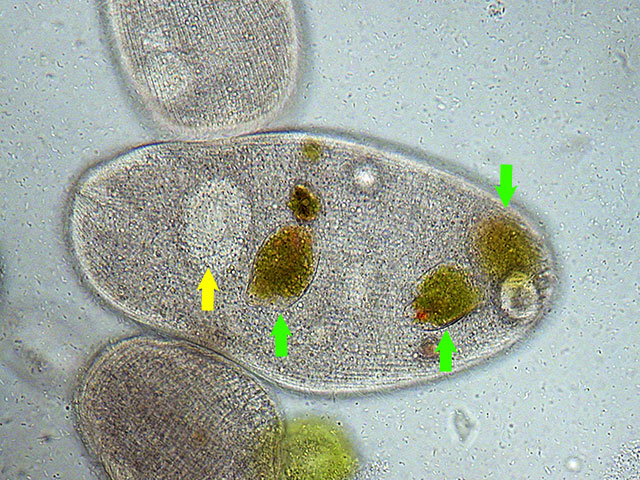 |
| Holophrya teres; another specimen, the green arrows point to the diet: euglenoid flagellates (the red eyespot is recognizable in some of them); the yellow arrow points to the macronucleus. (4) |
|
|
| Species identification courtesy of Dr. Martin Kreutz, Konstanz. |
| Location: NSG Suedheide (NS), pond (1); Gevelsberg, GruKlaZi, pond (2; 4;5; 6); Hattingen Oberstueter, garden pond (3); Mariaveen near Griendsveen, NL, sphagnum pond |
| Habitat: detritus (1); detritus (2);between plants/ detritus (3); detritus (4;7) |
| Date: 30.10. 2010 (1); 18.03.2009 (2); 02.08.2008 (3); 28.08.2006 (4); 02.05.2007 (5); 09.03.2006 (6) |
| Species identification courtesy of Dr. Martin Kreutz, Konstanz. |
| |
|